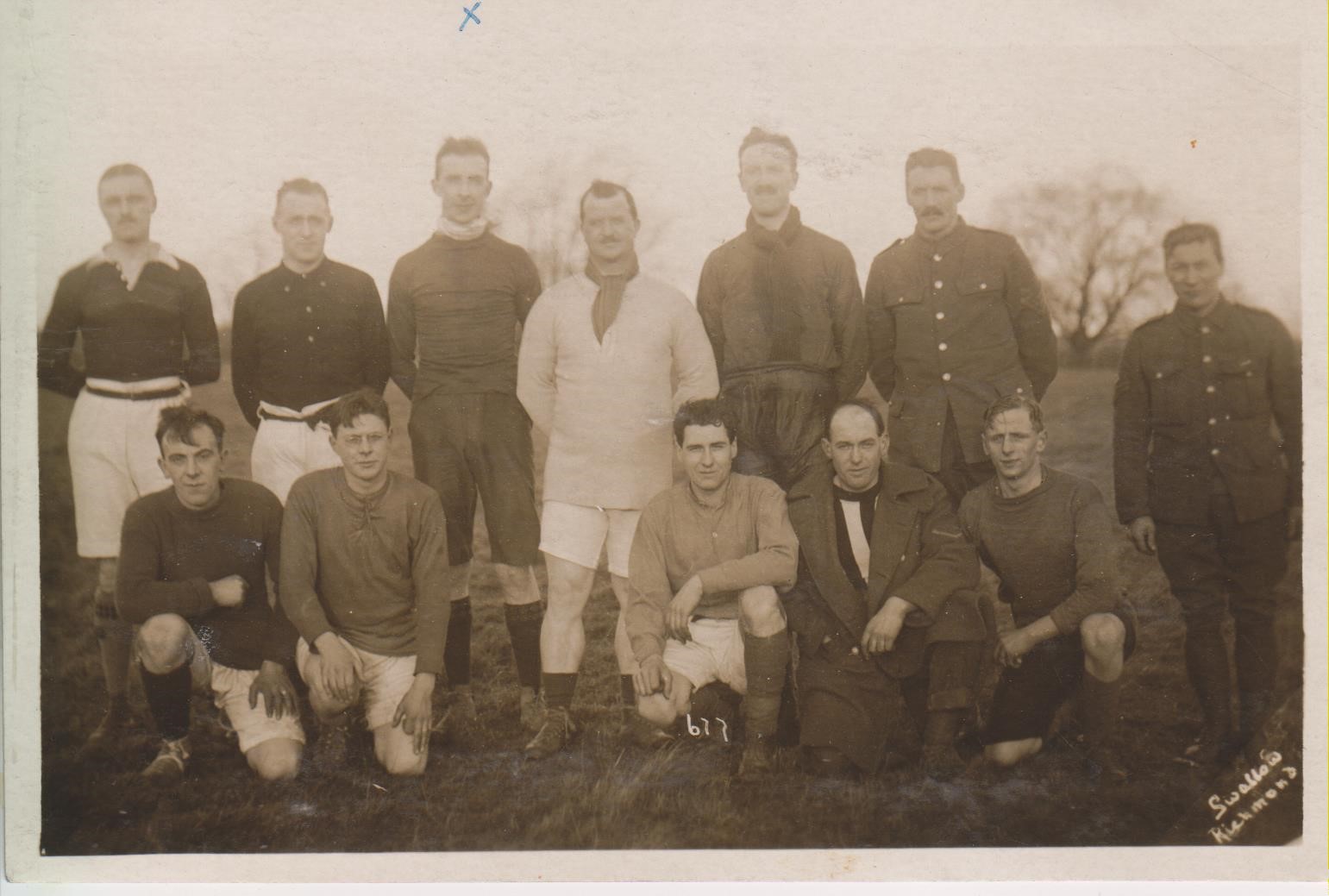
Mrs Drury of Richmond visited the museum to tell us about Jack Morley, her great uncle.
Jack Morley was one of nine children of a hill farmer in Weardale, County Durham and a keen athlete. In 1914 he lived in Toronto, Canada whither he had emigrated and worked as a cabinet maker. When war broke out he returned to England, to his mother’s great joy, to join up in the Durham Light Infantry. One of his five brothers was Customs and Exciseman for Swaledale and Wensleydale, based in Richmond, near Catterick Camp where Jack did some training. Jack would ride over to Richmond to visit and would tie up his horse in the garden to the great delight of his nieces!
Jack served in the 1915-1917 Salonica Campaign in northern Greece, at the time that city was badly burned. Jack organized the transport of supplies, mainly by mules through the hills up to the Struma Front. His height was 6’3” and together with his high-heeled riding boots and his high officer’s helmet, he made a commanding figure in securing the co-operation of the locals! In his time off he enjoyed shooting in the nearby Vardar Estuary marshes and brought home fine striped woollen socks run through with silver thread. The stamps from the postcards he sent home are still in a family stamp collection.

Explore more memories from the ribbon
-
Edward Methuen Stone
The Green Howards Museum’s Fiona Hall shares her thoughts about Edward Methuen Stone, her maternal grandfather: “This picture shows my grandfather, Edward Stone, with my Mum on her wedding day in 1960. Edward was born in St Mary le Bow in London in about 1900; in the 1901 census he is shown as living with his parents and three older sisters – Eliza, Emma and Julia, and a brother, John in Armagh Road. There is absolutely no existing anecdotal information regarding Edward’s war service within our family. My older cousins, who knew their granddad as young children, can’t remember anything ever being said about it. My grandfather died ten years before I was born, and I can only remember my Mum saying what a kind and gentle father he was. My great uncle John was ten years older than Edward. It seems he served in the Royal Engineers and also survived the war. No service record exists for Grandad Stone, so we do not know when he enlisted or was demobbed, or precisely where he served, his medal card shows he was a Private in the Norfolk Regiment. A researcher at their regimental museum managed to find just one intriguing reference to him. On the 10th of October 1916 he is recorded as being in 23 Base General Hospital, Amara, Mesopotamia with a ‘slight gunshot wound’. That’s it. There’s nothing else. The boy from Bow was in what’s now Iraq! Needless to say my cousins are gobsmacked. How could we…
-
German prisoners of war
The site of Richmond Camp as it was first called was suggested by Robert Baden Powell while he was based at Richmond Castle as Inspector-General of Cavalry. The name quickly changed to Catterick Camp in order to avoid confusion with Richmond in Surrey. The Camp’s first troops occupied the area for training in 1915. Major-General Michael Frederick Rimington was the officer in charge. In 1915 the decision was made to expand the training camp. A new prisoner of war camp was established and eventually 5000 German prisoners of war were housed there. Initially German PoWs were not permitted to work and boredom became a major problem. The prisoners played sports and even set up an orchestra (with instruments they made themselves) to fill their time. A change of government policy meant that prisoners could be allowed out of the camp to work as labourers. As a result they were employed in constructing the road leading out of Richmond Station, via St. Martins and on to Catterick Camp (Rimington Road). Catterick Prisoner of War Camp became the administrative headquarters for all ‘working camps’ in the area. By the end of the war 89,937 prisoners who had served with the German army were interned in camps across the United Kingdom.
-
Private Charles Percy Tempest
Researched by Paul Gayton. Private Tempest was in the 2nd Battalion of the Yorkshire Regiment and he was killed on the 1st of July 1916 (the first day of the Battle of the Somme) aged only 16 years of age. We believe that he is the youngest army fatality commemorated on the memorial in Friary Gardens. He was born in Richmond and his birth is registered in the 3rd quarter (July to September) 1900, so it is possible he may even have been 15 when he was killed. His parents were Thomas and Emily Annie Tempest. He had 3 older sisters, Edith Rose, Florence Ruth and Emily Ann. Also he had an elder bother Frances William. The family lived in nearby Sleegill where his father worked as a paper maker. The paper making industry on the river Swale existed in Richmond from the 1700s but ended in 1931. Charles Percy enlisted on the 22nd of August 1915 and was initially posted to the 3rd Battalion. In 1916 he transferred to the 2nd Battalion for active service in France. He is buried at Danzig Alley British cemetery at Mametz and his name is among the others that are commemorated in Friary Gardens.
